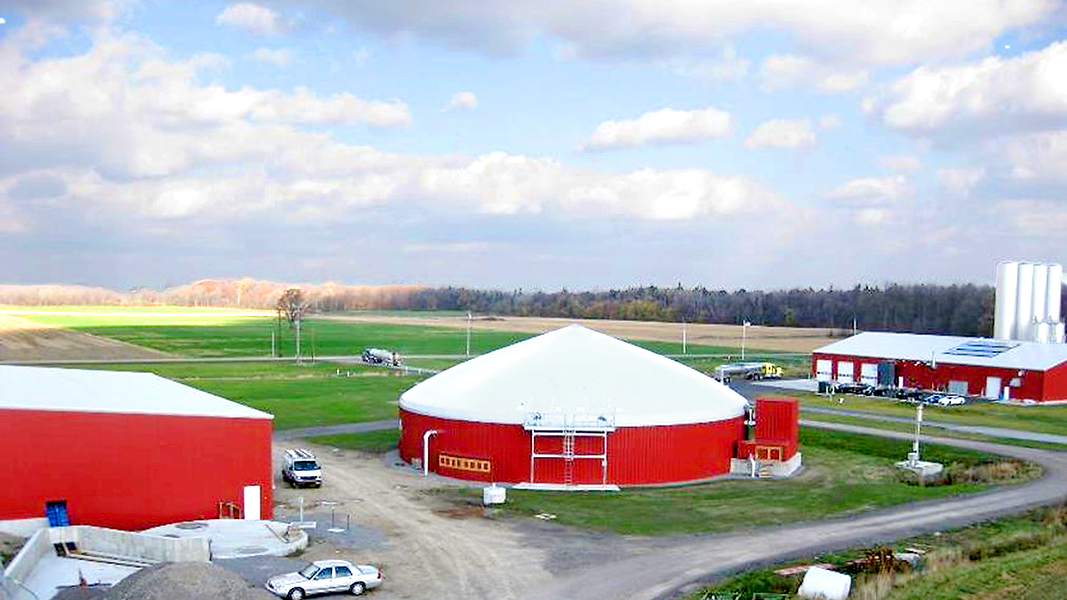Top: Noblehurst Green Energy digester at dairy farm in Linwood, NY. Photo courtesy of Natural Upcycling
Rep. Ron Kind (D-WI) reintroduced the bipartisan Agricultural Environmental Stewardship Act on June 18, which would provide tax incentives to farmers and rural electric cooperatives that invest in biogas technology. Kind was joined in introducing this legislation by Rep. Tom Reed (R-NY). “Wisconsin’s dairy farmers are the heart of our state economy, contributing $45.6 billion to it each year,” said Kind. “We need to ensure our farmers have the tools they need to continue to grow their businesses and create jobs. Providing these tax incentives is a commonsense way to make pursuing biogas technology more affordable for Wisconsin dairy farmers, helping to reduce their energy costs all while protecting our natural resources.”
The Act, which provides a 30% investment tax credit (ITC) for qualifying biogas and nutrient recovery systems, will increase agricultural viability by recycling organic material into renewable energy and healthy soil products. “We believe this bill will encourage greater investment in biogas systems and nutrient recovery technologies, which will create new jobs, promote sustainable farm practices, and provide additional revenue streams for farmers,” notes Patrick Serfass, Executive Director of the American Biogas Council (ABC). “The ABC is grateful for the continued support of Congressmen Kind and Reed.”
Currently, no tax incentive exists to incentivize biogas systems that produce renewable natural gas (RNG) or any nutrient recovery systems. “This new ITC would promote the development of biogas systems that turn their biogas into pipeline quality RNG for sale to gas customers who want to lower their carbon footprint, fleet owners who want renewable fuel and for renewable heat,” adds Serfass. “The tax credit would also promote use of nutrient capture technologies which remove certain nutrients in a watershed that has too much phosphorus or nitrogen, to create a product that can be sold in a watershed that needs that nutrient for soil health and to boost crop yields.”












